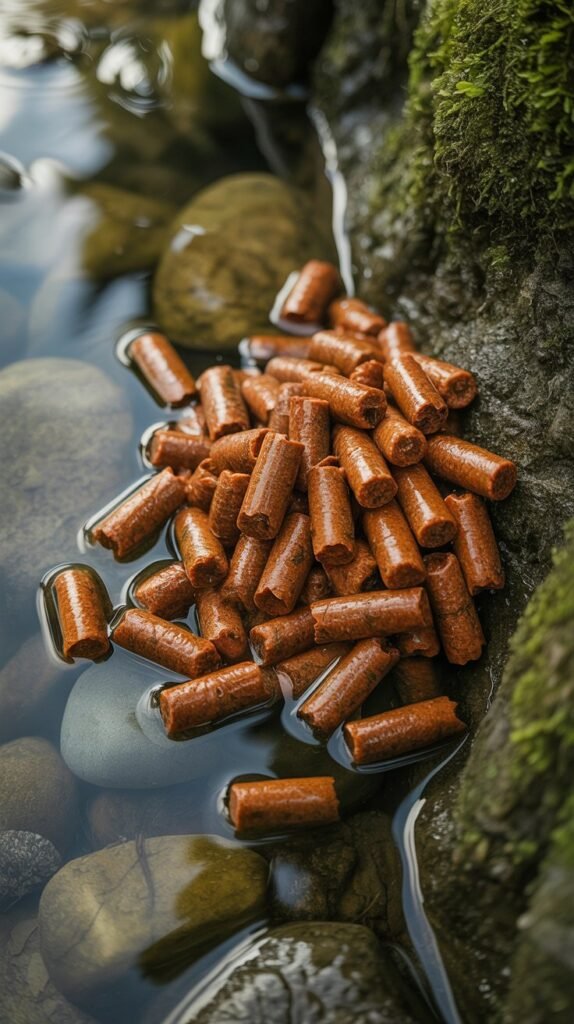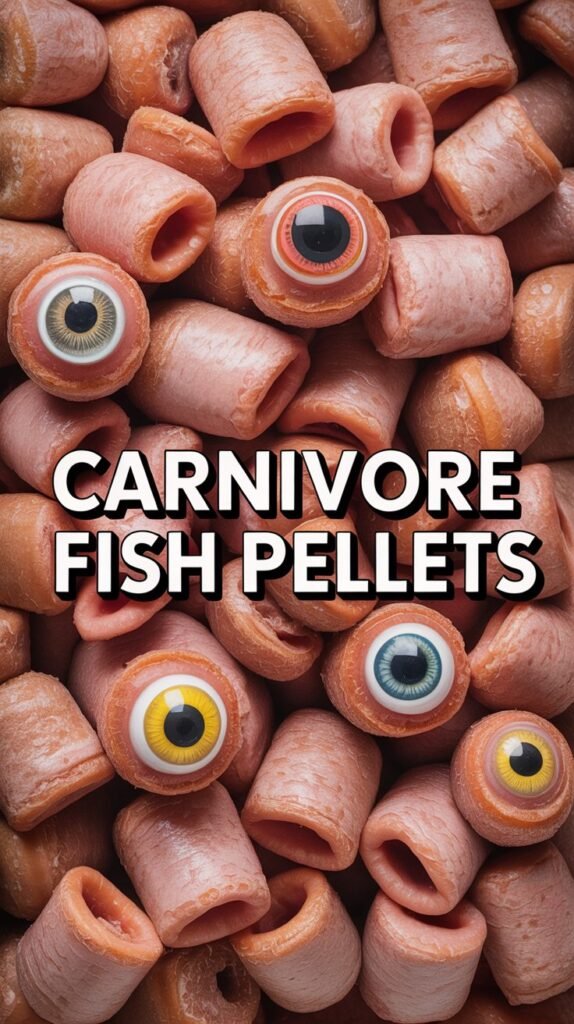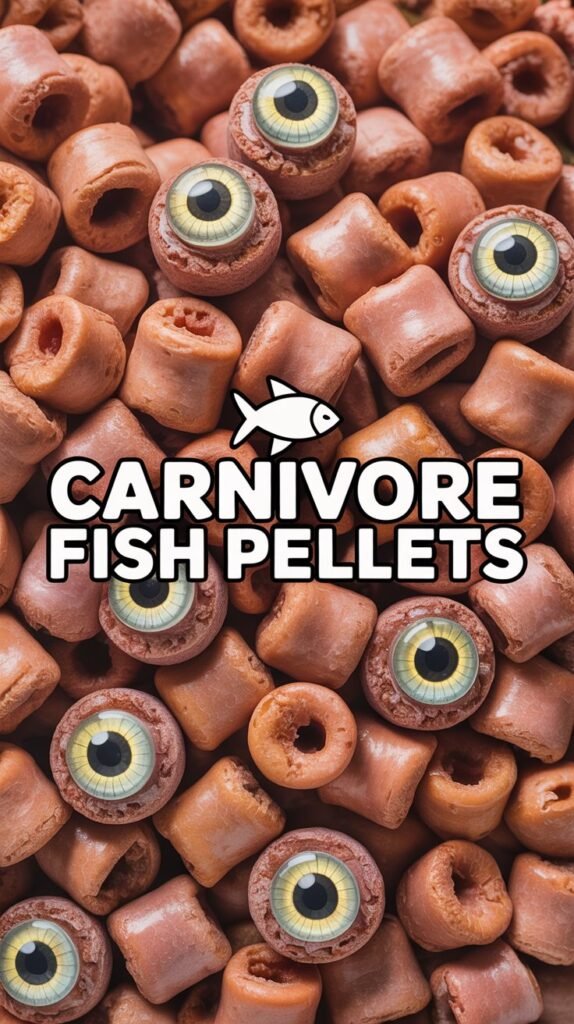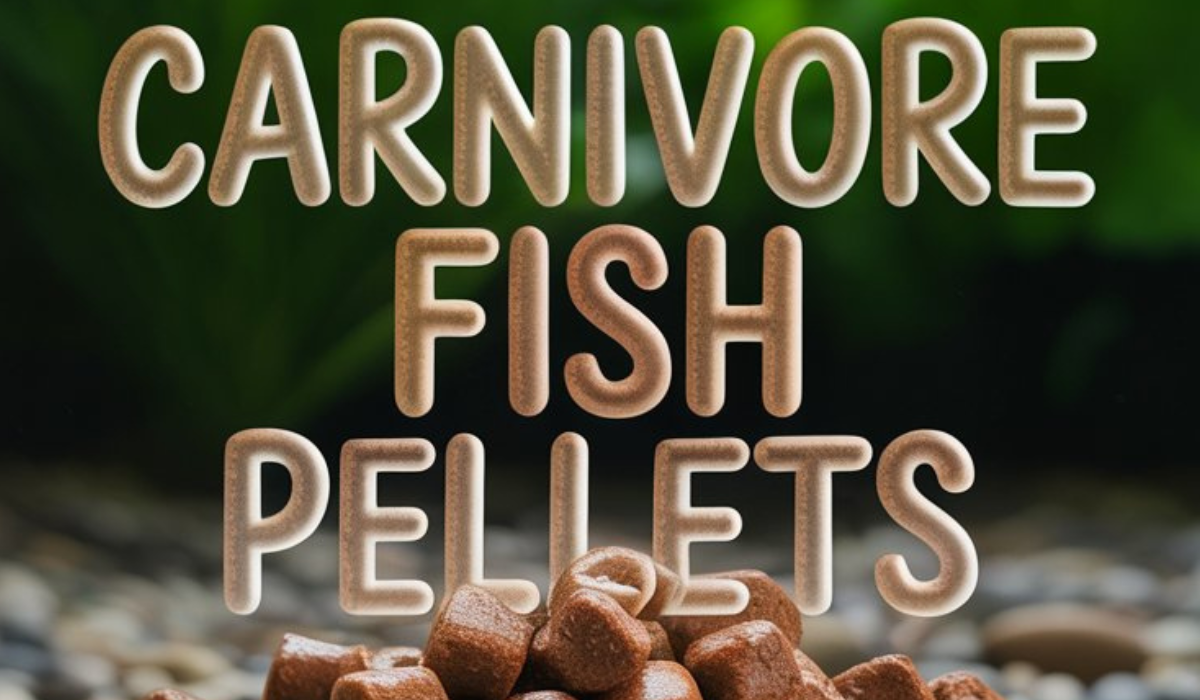Feeding aquarium fish is one of the most important responsibilities of any aquarist. While many fish thrive on plant-based or omnivorous diets, carnivorous species have specialized nutritional needs. Providing the right food ensures they maintain strong immune systems, vibrant colors, and healthy growth. One of the most effective and convenient ways to meet their needs is through carnivore fish pellets
Carnivore fish pellets are specifically designed to replicate the diet of predatory fish. They are protein-rich, easily digestible, and available in different sizes to suit everything from small cichlids to large catfish. In this comprehensive guide, we’ll explore what carnivore pellets are, how to choose the right type, their nutritional benefits, feeding strategies, and the top options available on the market. By the end, you’ll know exactly how to keep your meat-eating fish thriving
What Are Carnivore Fish Pellets?
Carnivore fish pellets are specially formulated fish food made primarily from animal-based proteins. Unlike omnivore or herbivore pellets that rely heavily on plant matter, these pellets are rich in fish meal, shrimp, krill, squid, or other protein sources. They are designed to mimic the diet of predatory fish in the wild, which often feed on smaller fish, insects, crustaceans, and worms

Pellets come in various forms, including floating, sinking, and slow-sinking varieties, allowing aquarists to match the feeding style of their fish. For example, surface feeders like arowanas benefit from floating pellets, while bottom dwellers such as catfish prefer sinking types
Why Carnivore Fish Need Specialized Diets
Carnivorous fish are natural predators that require higher amounts of protein and fat compared to herbivorous or omnivorous species. A protein-rich diet supports muscle development, energy, and overall vitality. Feeding them regular flakes or generic pellets often leads to malnutrition, slow growth, or even health problems
Some reasons why specialized carnivore pellets are important include:
- High Protein Needs: Many predatory fish require diets with 40–55% protein for optimal growth
- Better Digestibility: Animal-based proteins are easier for carnivores to process compared to plant matter
- Vibrant Colors: Ingredients like krill and shrimp enhance natural pigmentation
- Immune Support: Quality pellets often include vitamins and probiotics that strengthen the immune system
- Growth and Size Development: Protein fuels rapid growth in juvenile carnivores and maintains mass in adults
Providing carnivore-specific food ensures fish stay strong, active, and less prone to disease
Key Ingredients in Carnivore Fish Pellets
When choosing carnivore fish pellets, it’s important to check the ingredient list. High-quality pellets should include natural, protein-rich sources and minimal fillers. Here are some of the most common and beneficial ingredients:
- Fish Meal: A staple protein source, providing amino acids necessary for growth
- Shrimp Meal / Krill Meal: Enhances color and provides high levels of protein and carotenoids
- Squid Meal: Rich in protein and essential fatty acids, supports energy and reproduction
- Worm Meal (Bloodworms, Blackworms): Boosts protein intake and replicates natural diets
- Spirulina: While mostly plant-based, it adds vitamins, minerals, and antioxidants
- Fish Oil: Supplies omega-3 fatty acids for brain, immune, and organ health
- Vitamins & Minerals: Essential for immunity, shell growth (in crustaceans), and skeletal development
- Probiotics & Enzymes: Aid digestion and nutrient absorption
Avoid pellets with excessive fillers such as wheat, corn, or soy, as these are harder for carnivorous fish to digest and may cause bloating or waste buildup
Types of Carnivore Fish Pellets

Different fish species require different pellet types. Here are the most common varieties:
- Floating Pellets
- Best for surface feeders like arowanas, bettas, and some cichlids
- Encourages natural hunting behavior
- Sinking Pellets
- Designed for bottom dwellers such as catfish, loaches, and bichirs
- Prevents food competition with surface feeders
- Slow-Sinking Pellets
- Ideal for mid-water feeders like angelfish, discus, and oscars
- Ensures all fish in a community tank get food
- Micro Pellets
- Small-sized for young carnivores or smaller species such as dwarf cichlids
- Provide complete nutrition without overfeeding
- Jumbo Pellets
- Designed for large predators like snakeheads, peacock bass, and monster catfish
- Pack more protein per bite to satisfy big appetites
By matching pellet type to feeding habits, you reduce waste and improve nutrient uptake
Benefits of Feeding Carnivore Fish Pellets
Feeding carnivore fish pellets offers multiple benefits compared to live or frozen foods:
- Convenience: Easy to store, long shelf life, no thawing required
- Nutritional Balance: Formulated with precise protein, fat, vitamins, and minerals
- Safety: Unlike live feeders, pellets reduce the risk of introducing parasites or diseases
- Controlled Portions: Prevents overfeeding and water pollution
- Cleaner Tank: Pellets create less mess than raw meat or live prey
- Cost-Effective: More affordable than constantly buying live food
While variety is important, pellets form an excellent staple diet for most carnivorous aquarium fis
Feeding Guidelines for Carnivore Fish Pellets
Feeding carnivorous fish correctly is just as important as choosing the right food. Overfeeding can lead to obesity, aggression, and water pollution, while underfeeding stunts growth and weakens immunity.
Here are some general guidelines:
- Frequency: Feed adult carnivores once or twice a day. Juveniles may need two to three small meals per day
- Portion Size: Offer only what they can consume within 2–5 minutes
- Rotation: Alternate between pellets and other protein sources (frozen shrimp, worms, or occasional live food) to prevent dietary boredom
- Observation: Watch fish behavior. If food remains uneaten, reduce the quantity next time
- Tank Size Consideration: Larger tanks with many fish may require spreading food to different areas to ensure all fish get access
Best Carnivore Fish Species for Pellets

Not all carnivores readily accept pellets, especially if they were raised on live food. However, with time and conditioning, most species can adapt. Common aquarium carnivores that thrive on pellets include:
- Cichlids (Oscars, Jack Dempseys, Green Terrors, Peacock Cichlids)
- Catfish (Redtail Catfish, Pictus Catfish, Corydoras with micro pellets)
- Arowanas
- Bettas (though technically omnivores, they prefer protein-rich foods)
- Snakeheads
- Piranhas
- Bichirs
- Discus and Angelfish (slow-sinking micro pellets)
Transitioning fish from live food to pellets may take time, but once they adapt, pellets make feeding more consistent and safe
How to Transition Fish to Carnivore Pellets
If your fish is used to live or frozen food, transitioning to pellets may require patience. Here are some tips:
- Start by mixing pellets with frozen or live food to familiarize them with the new diet
- Soak pellets in shrimp juice or fish oil to enhance the scent and taste
- Offer pellets when fish are most hungry, usually in the morning or after a water change
- Gradually reduce the amount of live or frozen food while increasing pellet portions
- Be consistent. Some fish may take days or weeks to adjust
Patience is key, but once they start eating pellets, feeding becomes easier and more cost-effective
Common Mistakes in Feeding Carnivore Fish Pellets
Even experienced aquarists sometimes make mistakes when feeding carnivorous fish. Avoid these pitfalls:
- Overfeeding: Leads to obesity, aggression, and water fouling
- Poor Quality Pellets: Cheap brands with fillers cause bloating and poor nutrition
- Feeding Only Pellets: While pellets are excellent staples, occasional live or frozen food adds variety and enrichment
- Ignoring Fish Size: Using pellets too large or too small makes feeding inefficient
- Not Observing Behavior: Some fish may not eat pellets immediately, leading to waste accumulation
By avoiding these mistakes, you can ensure your fish stay healthy and your tank remains clean
Homemade Alternatives to Carnivore Fish Pellets
Some aquarists prefer preparing homemade foods to control ingredients. While not always necessary, homemade diets can supplement pellets.
Example Recipe:
- Blend shrimp, fish fillet, and bloodworms with a small amount of spirulina powder
- Add unflavored gelatin to bind the mixture
- Pour into trays and refrigerate until firm
- Cut into bite-sized pieces and feed as a pellet alternative
This ensures fresh, natural protein, but it should not replace commercial pellets entirely because pellets contain balanced vitamins and minerals not easily replicated at home
Storing Carnivore Fish Pellets
Proper storage ensures pellets remain fresh and nutritious:
- Keep pellets in an airtight container away from moisture and sunlight
- Avoid storing near heat sources, which can degrade nutrients
- Buy pellets in quantities your fish can finish within 3–6 months
- Refrigerate or freeze pellets if storing long-term to prevent mold or rancidity
Fresh food means better nutrition and less chance of your fish rejecting pellets
Conclusion
Carnivore fish pellets are an essential staple food for predatory aquarium fish. They provide the high protein, fat, and nutrients needed for growth, immunity, and vibrant colors. Unlike live foods, pellets are safe, convenient, and cost-effective. By selecting the right pellet type, feeding correctly, and offering variety, aquarists can keep their carnivorous fish thriving for years
Understanding the unique needs of carnivorous species ensures not only their health but also the balance of the entire aquarium environment. Whether you keep large predators like arowanas or smaller species like dwarf cichlids, carnivore fish pellets are a reliable and beneficial food choice
FAQs About Carnivore Fish Pellets
1. Can carnivore fish live on pellets alone?
Yes, high-quality pellets provide complete nutrition, but occasional frozen or live food can be offered for variety and enrichment
2. What percentage of protein should carnivore pellets contain?
Most carnivorous fish thrive on pellets with 40–55% protein, depending on species and age
3. Do all carnivorous fish eat pellets?
Not always at first. Some fish raised on live food may take time to accept pellets, but with patience, most can adapt
4. Are pellets better than live food?
Pellets are safer, more convenient, and nutritionally balanced. However, live food can stimulate natural hunting instincts
5. How often should I feed carnivore fish pellets?
Juveniles require 2–3 small meals daily, while adults can be fed once or twice a day depending on activity levels
6. Do pellets affect water quality?
If overfed, uneaten pellets can sink and decompose, causing ammonia spikes. Feed only what your fish can consume in minutes
7. Can I make homemade carnivore pellets?
Yes, but it’s difficult to balance vitamins and minerals. Homemade food works best as a supplement, not a replacement
8. Are floating or sinking pellets better?
It depends on species. Surface feeders prefer floating pellets, while bottom dwellers do best with sinking pellets
9. Do carnivore fish pellets enhance color?
Pellets containing krill, shrimp meal, or carotenoids enhance the natural coloration of fish
10. How do I store carnivore fish pellets?
Keep them in airtight containers, away from moisture and sunlight. Refrigeration extends freshness

